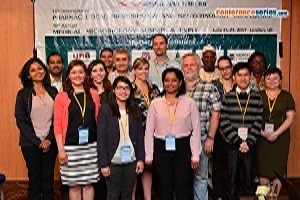
Antoni Bennasar-Figueras
Universitat de les Illes Balears, Spain
Title: First insights into the discovery of novel toxin-antitoxin systems from comparative genomics of non-tuberculous mycobacteria
Biography
Biography: Antoni Bennasar-Figueras
Abstract
The non-tuberculous mycobacteria (NTM), also known as rapid growing mycobacteria (RGM), include several species that are environmentally widely distributed. Some of them are even considered as emerging opportunistic pathogens. Many bacteria genomes, including those belonging to the Mycobacterium genus, contain a considerable number of toxin-antitoxin (TA) systems, specially the important slow growing pathogen M. tuberculosis. The TA systems are small genetic modules based on two genes, one coding for the toxin and another for its cognate antitoxin. These elements are well-known systems that can be related to the virulence of bacteria and are considered interesting targets for alternative treatments of infections. A detailed study from a genomic, functional and structural point of view of the TA systems could be useful for finding alternative targets in the treatment of hard-to-treat infections, such the ones caused by emergent opportunistic NTM pathogens. The comparative analysis of information based on the application of next-generation sequencing (NGS) technologies, has been useful to explore the presence of potential TA systems in clinical strains of NTM. Effectively, the genome sequencing of NTM isolates, the identification of gene families, functional characterization, and comparison, has revealed the presence of TA systems in several of the strains considered. Interestedly, most of the TA systems discovered in NTM are also present in M. tuberculosis. The potential toxic effect of the proposed toxins and its neutralization with the hypothetical antitoxins has been tested through their expression in Escherichia coli cells. A brand new functional type II epsilon/zeta toxin-antitoxin system has been discovered in a strain closely related to Mycobacterium chelonae. Additionally, in the vicinity of the new TA system are genes coding for proteins containing β-lactamases and integrases/transposases domains, representing a potential mobile genetic element stabilizing antibiotic resistance genes. Conclusively, this is a good example of how the new NGS based information may lead to important breakthroughs, both in biotechnology and clinical microbiology.




